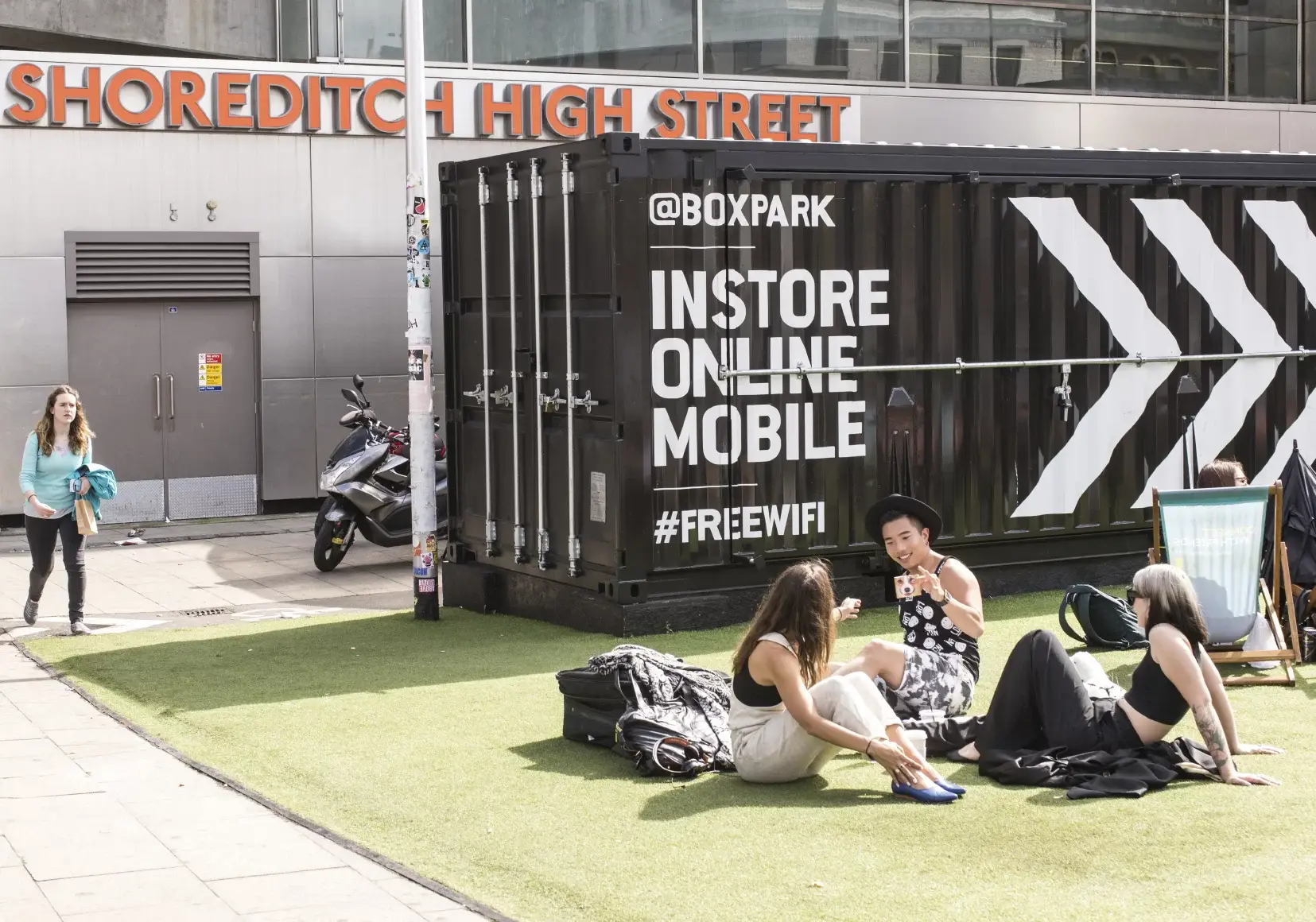Are pop-up shops in shipping containers revolutionising retail, or just a passing trend?
In recent years, the retail world has witnessed a dramatic shift. No longer confined to traditional brick-and-mortar establishments, businesses are embracing flexibility and creativity by transforming shipping containers into vibrant, temporary shops. This trend, fuelled by innovation, cost-effectiveness, and sustainability, is catching on in cities around the globe. But what’s driving this phenomenon, and is it here to stay?
Gone are the days when opening a shop meant committing to a 10-year lease and paying exorbitant rent in a prime location. Today, forward-thinking brands and entrepreneurs are capitalising on the mobility and affordability of shipping containers to create pop-up shops. From trendy coffee bars and fashion boutiques to tech demos and art galleries, these compact, modular spaces are offering businesses a unique way to engage with customers.
Why are pop-up shops in shipping containers gaining popularity? For one, they provide a tangible experience, something online shopping can never replace. Beyond that, the low-cost, high-visibility nature of these structures appeals to businesses of all sizes. And as society leans towards eco-friendly and minimalistic living, it’s no surprise that these rugged, reusable containers have found their place in the retail landscape.
But there’s more to this story. The shipping container shop is not just about lowering costs—it’s about offering a fresh, engaging, and flexible experience for both businesses and consumers.
1. The Evolution of Pop-Up Culture
A Brief History
Pop-up shops as a concept aren’t new. Dating back to the early 2000s, brands like Target and Adidas launched short-term, experiential spaces to build buzz around new products. However, in the last decade, this trend has evolved, moving beyond major cities and brands to small businesses and solo entrepreneurs. And with the advent of re-purposing shipping containers, this evolution has skyrocketed.
Sustainability and Cost-Efficiency
Shipping containers were once viewed as giant metal boxes used solely for transporting goods. But when repurposed, they become stylish and functional retail spaces. A second-hand container can cost as little as £2,000 to £4,000, a fraction of the cost of a standard retail space. Plus, they’re incredibly durable, requiring minimal upkeep, which further reduces long-term costs. For eco-conscious brands, using a recycled container instead of constructing a brand-new building speaks to their values of sustainability and innovation.
Mobility is Key
One of the biggest advantages of pop-up shops in containers is their mobility. Businesses are no longer tethered to one location. Need to target a new neighbourhood? Just pick up and move. Want to take your shop to a festival, a city centre, or even a countryside market? No problem. This flexibility allows brands to experiment with different locations, demographics, and marketing strategies without breaking the bank.
2. The Appeal of Shipping Containers for Businesses
Low-Cost, High-Impact Retail Spaces
Traditional retail space is costly, especially in prime locations. Shipping containers offer a solution by providing a physical presence at a fraction of the cost. A basic, second-hand container can be transformed into a chic, modern retail unit with a few coats of paint and some clever interior design. And for businesses, the lower overhead costs mean they can focus their budget on the products, marketing, and customer experience.
Customisation and Branding
One of the most exciting aspects of shipping container shops is the ability to customise. They can be painted, branded, and modified in countless ways to reflect a company’s identity. Whether you’re a minimalist café owner or a luxury fashion designer, your container can be tailored to embody your brand’s personality. And since it’s a temporary space, businesses often take more creative risks, resulting in shops that are unique, visually striking, and memorable.
An Instagrammable Experience
Let’s face it, a well-designed pop-up shop in a shipping container can be a magnet for social media engagement. People love snapping photos of quirky, unexpected spaces, especially when they’re aesthetically pleasing. For brands, this means free advertising as customers share their experiences online. It’s no coincidence that many shipping container pop-ups are located in high-footfall areas where foot traffic is driven by both curiosity and a desire for a picture-perfect moment.
3. Consumer Experience
Creating a Sense of Urgency
Pop-up shops are, by nature, temporary. This fleeting presence generates a sense of urgency in consumers. It’s the classic “get it before it’s gone” mentality. Shipping containers, often seen in unexpected locations, add to this excitement by creating an exclusive, limited-time shopping experience. Consumers are drawn to the novelty, knowing that the shop might not be there next week.
Personal Connection with Brands
Online shopping might be convenient, but it lacks the personal touch. Pop-up shops in shipping containers allow customers to engage with products and the people behind them. They offer an intimate, interactive experience that can’t be replicated online. This is especially valuable for small businesses and independent brands that want to build a loyal following.
Supporting Local Economies
Pop-up shops in shipping containers can also benefit local economies. Many businesses partner with other local vendors or artisans to create a community hub. Whether it’s a farmer’s market or a festival, these temporary retail spaces can foster a sense of local pride and encourage consumers to support small, independent businesses.
Case Study: Aesop’s Shipping Container Pop-Up Shop
Australian skincare brand Aesop, known for its minimalistic design and high-quality products, embraced the shipping container trend in a bold and elegant way. In 2015, the company launched a temporary pop-up store in a repurposed shipping container at the Hong Kong International Airport. This shop was a perfect example of how high-end brands can use these industrial spaces to maintain their luxury appeal while benefiting from the flexibility and cost savings containers offer.
The Concept
Aesop’s pop-up was a testament to its ethos of simple, functional design. The exterior of the container was sleek and modern, with clean lines and a matte black finish. Inside, the brand managed to replicate its typical store layout in the limited space, using elegant wooden shelving and warm lighting to create a calming, spa-like atmosphere. It was a powerful demonstration of how even a temporary shop in a rugged, industrial shell could exude luxury and sophistication.
A Strategic Location
Placing the container shop in an international airport was a stroke of genius. Airports are prime real estate for brands looking to reach a global audience with high spending power. By choosing this location, Aesop was able to tap into a transient, affluent market, offering travellers the convenience of purchasing luxury skincare products on the go. The temporary nature of the shop added to the exclusivity, creating a sense of urgency for customers to make a purchase before they left.
Sustainability in Action
As a brand that values sustainability, Aesop used the shipping container pop-up to showcase its commitment to eco-conscious practices. The repurposing of the container itself was a nod to the brand’s environmental principles, aligning with its mission to minimise waste and use materials thoughtfully. This, combined with their simple yet luxurious product range, resonated deeply with consumers who increasingly value sustainability.
Impact
Aesop’s shipping container pop-up generated significant buzz, not just among travellers but also in the wider retail industry. The success of this temporary store inspired other luxury brands to experiment with shipping containers as retail spaces. It also reinforced the idea that high-end brands can use unconventional spaces to engage with their customers while maintaining their brand identity.
The result was a win-win: Aesop gained exposure to a new market without committing to a long-term retail lease, and consumers got to experience the brand in an unexpected and memorable way.
“Shipping containers offer the ultimate blend of affordability, flexibility, and sustainability, making them the perfect platform for today’s ever-evolving retail landscape.”
Looking to start your own pop-up shop or explore innovative retail concepts? Discover how shipping containers can elevate your business. Get in touch with us today to explore the possibilities.









